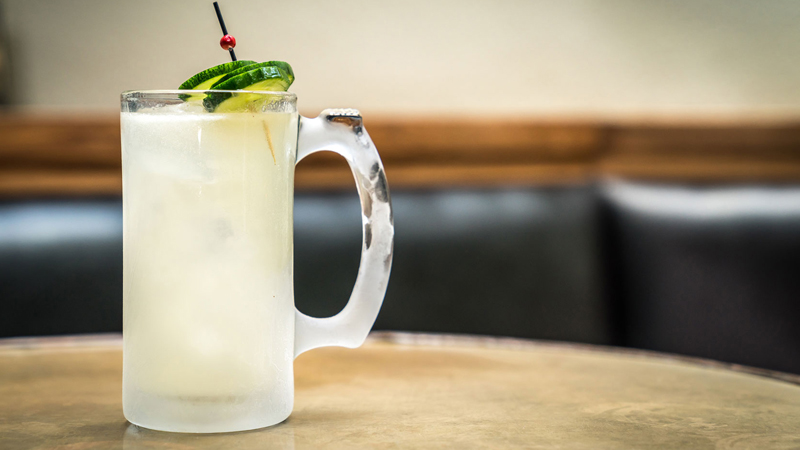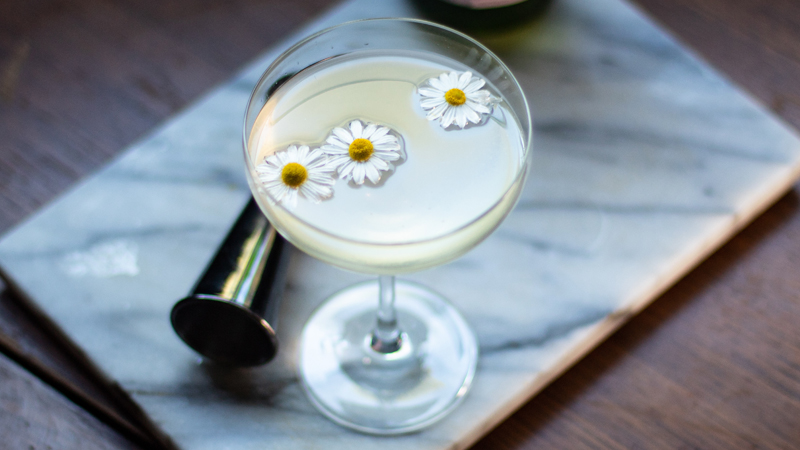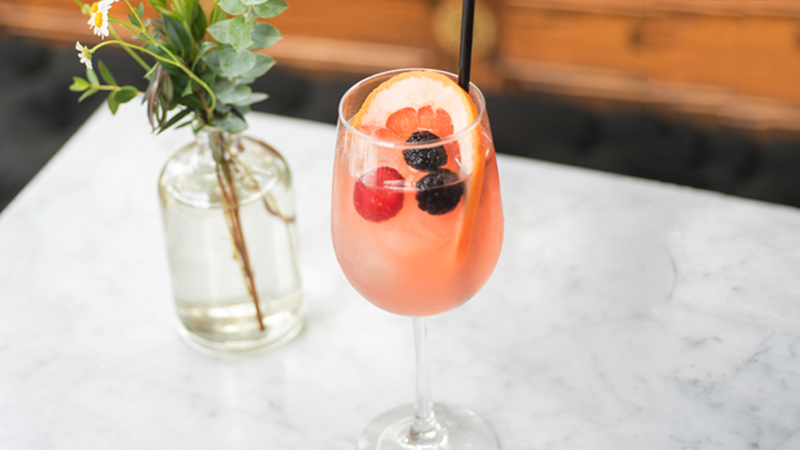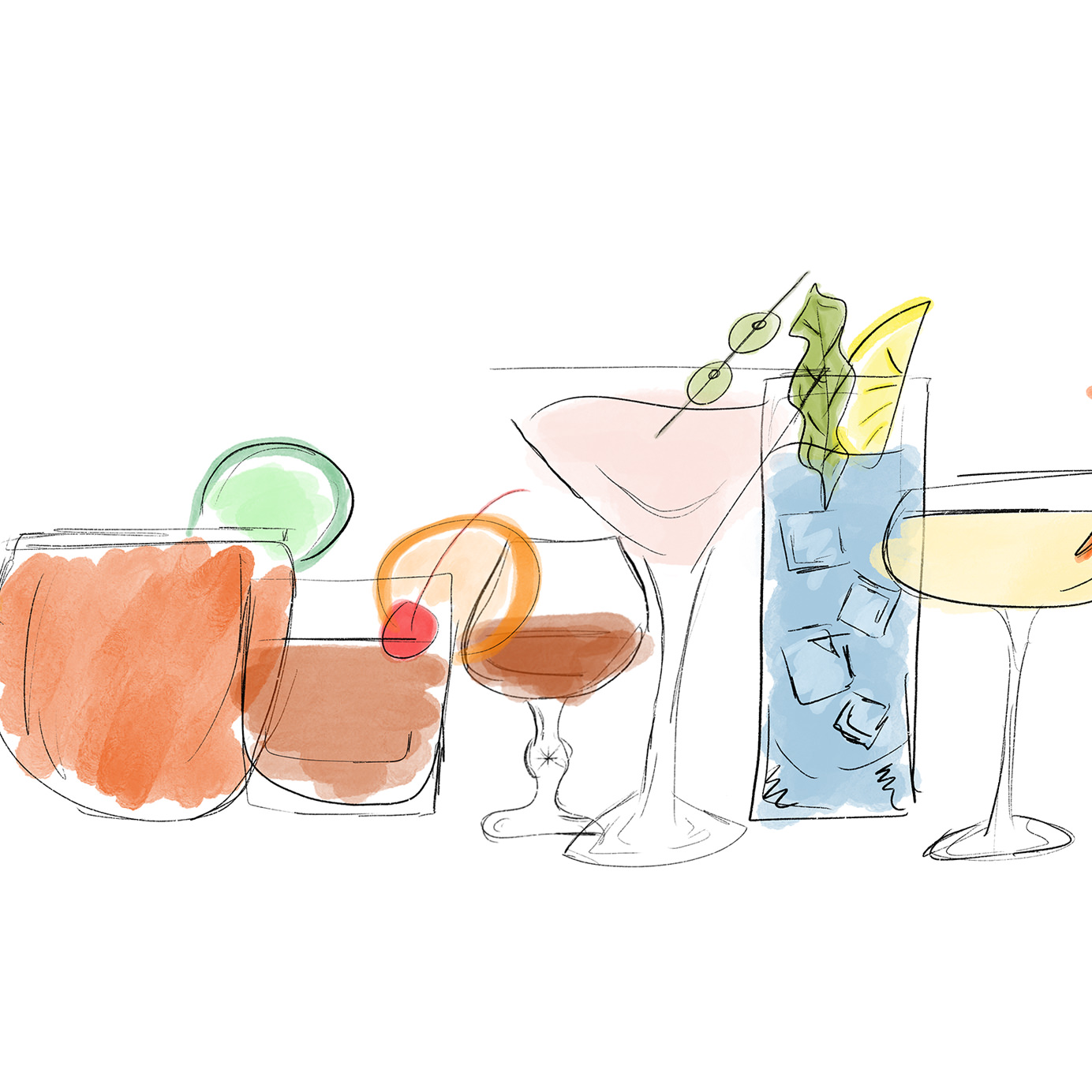The modern cocktail renaissance has resurrected scores of techniques, recipes, and ingredients. Rye, bourbon, and amari, not to mention Flips and Daiquiris, have made recent comebacks in cutting-edge cocktail bars nationwide.
One of the most popular throwbacks is low-ABV, or low-alcohol-by-volume, drinks. If you’ve had an Aperol Spritz, or seen your friends Instagramming theirs, then you’ve already skimmed the surface of what low-ABV cocktails bring to the table.
Popular in European cities for centuries, low-ABV drinks are now booming across the United States, inspiring unique cocktails and several product launches. American-made amari, liqueurs, and other low-proof spirits are joining their Old World forebears in bartenders’ back bars, and wellness-minded consumers seek ways to join the party without overindulging.
Low-proof drinking is all the buzz because it appeals to a new generation of educated drinkers who are curious about new ways to imbibe. It allows us to moderate our own consumption, try new flavors and mixtures, and, most importantly, save room for whatever’s next.
*
“Low-ABV drinks are, typically, cocktails that have their main ingredients as a sake, vermouth, sherry, and other fortified or aperitif wine variants,” Miguel Salehi, bartender at The Beehive in San Francisco, says. “This low-ABV category will have alcohol contents that will fall within the 15 to 20 percent range. (Most spirits start at 40 percent alcohol and move upwards).”
Less alcoholic ingredients give bartenders new drink formats to play around with, such as now-ubiquitous spritzes, and new ways to think about flavors and balanced cocktails for their patrons. In America’s rapidly evolving cocktail culture, innovation is key.
“What we’ve seen recently is a huge demand for cocktail programs in restaurants,” Salehi says. Historically, many bartenders and chefs have struggled to pair boozy cocktails with food, worrying that the flavors and strength of mixed drinks can quickly overpower dishes.
“This is where low-ABV drinks can really come in handy,” he says. “You can start the meal with a nice vermouth Highball or Americano variation to go with the salad. Having some charcuterie? Try a Bamboo! Having dessert? Pair it with a Sherry Cobbler! Low-ABV drinks allow cocktails to become a viable option with food.”
Several new spirits, particularly amari, bitter aperitivi, and liqueurs, have launched to speak to consumers’ growing interest in low-ABV cocktails. Take the award-winning liqueur Italicus. Made with Italian bergamot and other floral botanicals, it is a subtle yet flavorful modifier. It won best new spirit at the 2017 Tales of the Cocktail Spirited Awards the year it launched.
“There are so many awesome ingredients out there to play with,” Haley Forest, the national brand ambassador for Italicus in the U.S., says, listing sherry, amari, and bitters among bartenders’ favorite low-ABV, high-flavor options. Fortified wines like vermouth and sherry are becoming increasingly popular on cocktail menus around the country as well, thanks to their robust flavors and drinkability.
Lo-fi Aperitifs is a California-based brand that has both dry and sweet vermouths, along with a wine-based gentian amaro. The brand actively embraces its role in cocktails, publishing more than 30 original recipes on its site. In July 2018, it hosted an industry brunch with low-proof cocktails at the annual Tales of the Cocktail convention.
Regal Rogue, an Australian vermouth brand, is set to launch in November 2018 in the U.S. Meanwhile, American craft distilleries such as Tattersall Distilling and Ransom Spirits are releasing their own expressions of amari and fortified wines, respectively.
Many other aperitif, amari, and fortified wine brands have launched in the past two to three years. William Grant & Sons, a major international spirit company, debuted a sweet vermouth infused with cascara, the discarded fruit of the coffee berry, named Discarded, in summer 2018. Last summer also saw the debut of an aromatic aperitif, Rosa 22, from Riboli Family Wine Estates, creator of America’s No. 1 imported Italian wine, Stella Rosa. Crafted in Italy’s Piedmont region, Rosa 22 is a light, bitter orange aperitif somewhat reminiscent of Aperol.
There is also a general affinity toward health-mindedness that has been influential in the embrace of low-ABV cocktails.
“As more and more guests begin to focus on their health, I think it is only natural for people to embrace moderation,” says Erick Castro, an industry jack-of-all-trades who owns multiple bars, most notably the award-winning Polite Provisions in San Diego. He is also the host of the “Bartender at Large” podcast. “It seems that many folks want to enjoy a properly made cocktail for the sake of flavor and ceremony, while minimizing the buzz so they can have fun for longer,” he says.
“I think it is a combination of people being health conscious and people focusing on the drinks themselves rather that just getting drunk,” Forest, brand ambassador for Italicus, says. “Low-ABV drinks allow for a lengthier drinking session without the boozy side effects.”
Low-ABV cocktails often use fortified wines and aperitifs as their base. That doesn’t necessarily mean that spirits fall by the wayside; instead, higher-proof alcohols become modifiers, taking the back seat to their less spirituous counterparts. This ensures that low-ABV ingredients have a solid backbone to build on so they aren’t drowned out but other ingredients in the mix. It presents an exciting challenge for bartenders.
Kathleen Amtower, bartender at Vol. 39 in Chicago, created her own take on the low-ABV Sherry Cobbler that uses oloroso sherry as the base with Santa Teresa 1796 rum as the supporting spirit. It is balanced with rhubarb shrub, Angostura bitters, and a muddled strawberry over crushed ice, and is garnished with cracked black cardamom and fresh basil — a perfect cocktail to pair with dessert.
*
The rise of low-proof cocktails aligns with the needs of modern consumers looking for something a bit healthier and more sophisticated. As American cocktail culture continues to evolve, many of us are looking for something thoughtful and contemplative to sip, not just a booze delivery vehicle. It’s a time-tested idea.
“We’re calling this a trend but in reality, it’s been around for a long time,” Salehi says. “Aperitivos have always been a huge part of European culture and maybe we’re just now catching up to this way of enjoying a few drinks with friends, while taking things a little slower.”
Low-ABV Cocktail Recipes
Yuzu Spritz by Masa Urushido (Katana Kitten, NYC)

- 1 ounce Choya Umeshu
- 1 ounce manzanilla sherry
- ½ ounce Salers Aperitif
- ¾ ounce yuzu-lemon sherbet (recipe follows)
- Soda to top
Directions:
- Combine ingredients in a Highball glass over ice.
- Top with soda.
- Garnish with three cucumbers (optional).
Yuzu-Lemon Sherbet
- 1,000 grams sugar
- Peels of 5 lemons
- 750 grams lemon juice
- 250 grams yuzu juice
Directions:
- Muddle lemon peels in sugar.
- Add lemon and Yuzu juices, and stir until the sugar is dissolved.
- Strain through cheese cloth. Keep refrigerated.
Feeling Bubbly by Tyler Zielinski

- 2 ounces Lo-fi Dry Vermouth
- ½ ounce lemon juice
- 2 to 3 ounces Fever-Tree Citrus Tonic
- Garnish: edible flower and expressed lemon peel
Directions:
- Combine vermouth and lemon juice in a mixing glass with ice, and stir until chilled.
- Strain into coupe glass, and top with tonic.
- Garnish for serving.
Layover in Paris by Alicia Perry (Polite Provisions, San Diego)

- 3 ounces sparkling rosé
- 1 ounce soda water
- ¾ ounce Giffard Pamplemousse
- ¾ ounce grapefruit juice
- 2 dashes absinthe
Directions:
- Build ingredients in a wine glass over ice.
- Garnish with a grapefruit twist and fresh berries.
